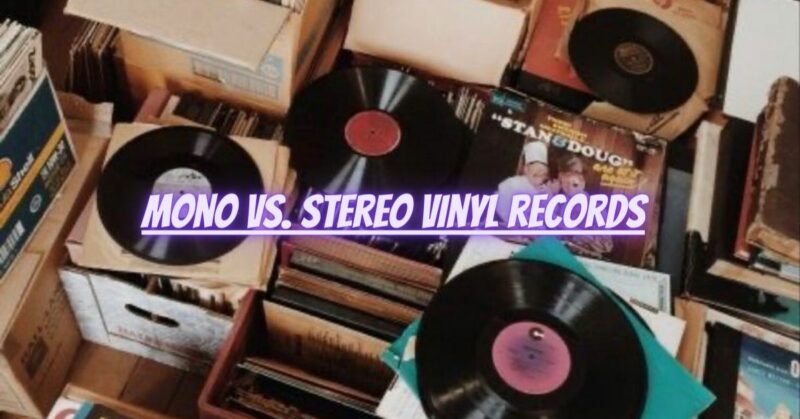When it comes to vinyl records, you may come across the terms “mono” and “stereo” to describe different recordings. These terms refer to the audio format in which the music was originally mixed and mastered. In this article, we will explore the differences between mono and stereo vinyl records, their historical significance, and how they can impact your listening experience.
- Mono Recordings: Mono, short for monaural, refers to a recording where all the audio signals are combined into a single channel. In the early days of vinyl records, mono was the standard format for recordings. Mono records have a focused and centered sound, with the instruments and vocals typically placed in the middle of the soundstage. The sound is consistent across both speakers, making mono records ideal for older playback systems or equipment with a single speaker.
- Stereo Recordings: Stereo recordings separate the audio signals into two or more channels, allowing for a more spatial and immersive listening experience. Stereo records provide a sense of depth, with instruments and vocals distributed across the soundstage. This format allows for more intricate audio placement, creating a three-dimensional effect. Stereo records are compatible with stereo playback systems, which utilize two speakers to reproduce the left and right channels separately.
- Historical Significance: In the mid-1960s, stereo recordings gained popularity and eventually became the standard for new releases. The development of stereo technology allowed for more creative mixing and enhanced the listening experience. However, it is important to note that not all recordings from this period were initially released in stereo. Some older recordings, especially those from the 1950s and earlier, were originally recorded and released in mono.
- Sound Differences: The sound differences between mono and stereo recordings can vary depending on the specific mix and mastering techniques used. Mono records tend to have a more direct and focused sound, with the instruments and vocals positioned in the center. Stereo records offer a wider soundstage, with instruments and vocals spread across the left and right channels. Stereo recordings can provide a more immersive and detailed listening experience, as they capture a greater sense of the original recording environment.
- Collector’s Considerations: For collectors, the format of a vinyl record can significantly impact its value and desirability. Mono records, particularly early pressings or rare releases, are often sought after by collectors due to their historical significance and scarcity. Stereo records, on the other hand, became more common in later years, and certain albums may have unique stereo mixes that make them highly collectible.
- Personal Listening Preference: Ultimately, the choice between mono and stereo records comes down to personal preference and the quality of your playback system. Some music enthusiasts appreciate the nostalgic and focused sound of mono recordings, while others enjoy the immersive and expansive experience of stereo recordings. It is worth experimenting with both formats to determine which one resonates with your listening preferences.
Conclusion: Mono and stereo vinyl records represent different eras in music production, with each format offering its own unique characteristics and listening experiences. Mono records capture the simplicity and directness of early recordings, while stereo records provide a more immersive and spatial soundstage. Both formats have their merits and appeal to different types of music lovers and collectors. Whether you prefer the focused sound of mono or the expansive soundstage of stereo, exploring both formats can enhance your appreciation of vinyl records and the music they hold.


